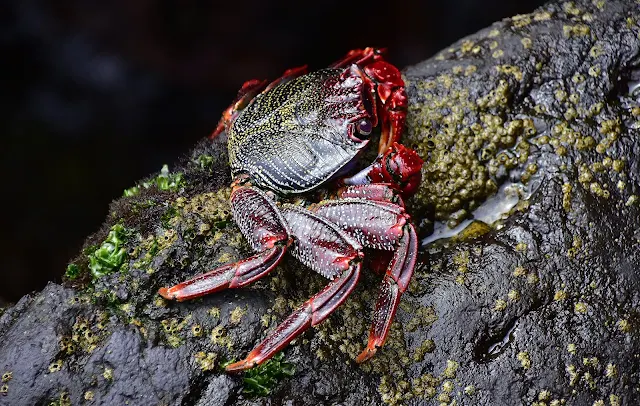Search This Blog
"encyclopedia of infinite wisdom" is your ultimate resource for in-depth information on technology, science, health, education, finance, and lifestyle. Explore well-researched articles, detailed tutorials, and interactive guides to expand your knowledge and skills. Join our community and stay informed with the latest updates and expert insights.
Featured
Sea Crabs
Introduction
Definition and Overview: Briefly introduce sea crabs, their classification, and general characteristics.
Importance: Explain why sea crabs are significant in marine ecosystems and human culture.
Body
1. Classification and Species Diversity
Taxonomy: Discuss the classification of crabs within the animal kingdom.
Species Diversity: Highlight the variety of crab species, focusing on notable ones like the blue crab, king crab, and Dungeness crab1.
2. Anatomy and Physiology
Physical Characteristics: Describe the anatomy of crabs, including their exoskeleton, pincers, and legs.
Adaptations: Explain how crabs have adapted to their environments, such as their ability to walk sideways and their specialized gills for breathing underwater2.
3. Habitat and Distribution
Marine Habitats: Detail the different habitats where crabs are found, from shallow coastal waters to deep-sea environments.
Geographical Distribution: Discuss the global distribution of crabs and how different species are adapted to various regions3.
4. Behavior and Ecology
Feeding Habits: Describe the diet of crabs and their role as scavengers in the marine ecosystem.
Reproduction and Life Cycle: Explain the reproductive behavior of crabs, including their mating rituals and the development of larvae3.
Migration Patterns: Highlight the migration patterns of certain crab species, such as the red crabs of Christmas Island3.
5. Economic and Cultural Significance
Fisheries and Aquaculture: Discuss the economic importance of crabs in commercial fisheries and aquaculture.
Culinary Uses: Explore the culinary significance of crabs in various cultures, including popular dishes and cooking methods.
Cultural Symbolism: Mention any cultural or symbolic meanings associated with crabs in different societies.
6. Conservation and Threats
Environmental Threats: Identify the major threats to crab populations, such as habitat destruction, pollution, and overfishing.
Conservation Efforts: Discuss the measures being taken to protect crab species and their habitats, including marine protected areas and sustainable fishing practices2.
Conclusion
Summary of Key Points: Recap the main points discussed in the essay.
Future Outlook: Provide a brief outlook on the future of crab populations and the importance of continued conservation efforts.
Key Points to Include
Introduction: Sea crabs are fascinating creatures that play a crucial role in marine ecosystems. They belong to the order Decapoda and are known for their hard exoskeleton and pincers.
Classification and Species Diversity: There are over 7,000 species of crabs, each adapted to different environments. Notable species include the blue crab, king crab, and Dungeness crab1.
Anatomy and Physiology: Crabs have a unique anatomy that allows them to thrive in various marine environments. Their exoskeleton provides protection, while their pincers are used for feeding and defense2.
Habitat and Distribution: Crabs are found in diverse habitats, from shallow coastal waters to the deep sea. They are distributed globally, with each species adapted to specific regions3.
Behavior and Ecology: Crabs are omnivorous scavengers that play a vital role in the marine food web. Their reproductive behavior includes complex mating rituals and the release of larvae into the water3.
Economic and Cultural Significance: Crabs are economically important in fisheries and aquaculture. They are also a culinary delicacy in many cultures, with dishes like crab cakes and crab bisque being popular2.
Conservation and Threats: Crabs face numerous threats, including habitat destruction and overfishing. Conservation efforts are essential to protect these species and ensure their survival2.
This outline should help you structure your essay and ensure you cover all the essential aspects of sea crabs. If you need more detailed information on any specific section, feel free to ask!


